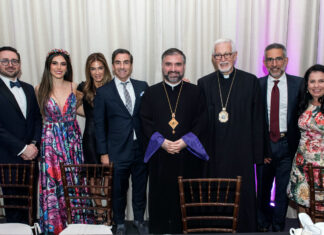By Janice Okoomian
Special to the Mirror-Spectator
As people who once suffered genocidal racism, Armenian Americans are ethically obligated to oppose racism wherever we find it. Anaïs DerSimonian made a strong case for why Armenian Americans should support the Black Lives Matter movement in the June 4th issue of the Mirror-Spectator, as did Razmig Sarkissian and Alik Ourfalian in the June 1st edition of Asbarez. We are living through an extraordinary era, in which members of the public are becoming better informed about systemic racism, and it is heartening to see so many Armenian Americans taking an interest. In order to fight racism we must understand how racism functions in the US and how each of us is positioned in relation to it.
It remains to be seen whether the current Black Lives Matter demonstrations will result in meaningful reform, not only of policing, but of all the other systems and structures that sustain and reproduce racist domination in our country. In order for us to understand the relevance of Black Lives Matter to our lives, it is essential for Armenian Americans to understand the history of our own racial status in the United States. When in 2002 I published an academic article on this topic, it did not make much of a splash. All these years later, however, when Armenian Americans are becoming interested in our racial status, my article has become salient, as indicated by the number of requests I am receiving for copies of it.
What is race, anyhow? Most people think that race is an objective or essential trait that we were born with, so when we identify our race (on a government or employment form, for instance) we are merely stating a preexisting truth. But in fact, it works the other way around. Multiple social institutions (governmental, educational, business, entertainment media) “construct” your racial status. Scholars from multiple fields (including evolutionary biology, anthropology, and sociology, to name a few) have demonstrated that it is a total fiction. Common sense understandings of racial categories, based on physical features, language, or culture, simply do not have any grounding in objective or scientific fact.
Scholar Ian F. Haney-Lopez uses the term “fabrication” to indicate just how artificial racial constructions are. And yet, even though they are fabrications, racial categories are powerful indexes of social power, almost always involving domination of some racialized groups by others. It is important to understand that racism is woven into our social structures. What that means is that racism resides not only in the attitudes, beliefs, or intentions of individuals but also, and more subtly, in social structures themselves, which function to perpetuate white supremacy and privilege. Even if we as individuals oppose racism in our minds, we end up contributing to systemic racism by interacting with everyday institutions.










